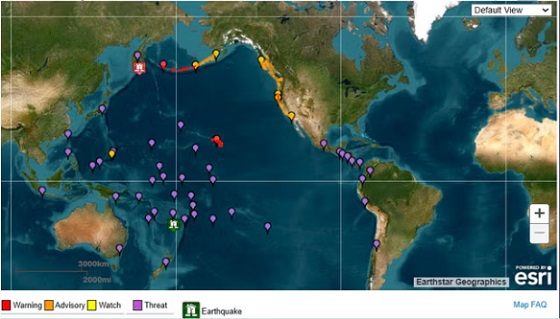Disaster
‘It’s Going to Be Catastrophic’: Why the Next Pandemic Will Be Worse Than COVID

From Heartland Daily News
By Rob Bluey of the Daily Signal
The former director of the Centers for Disease Control and Prevention is warning Americans to prepare for the next pandemic, which he fears will be more catastrophic than COVID-19.
Dr. Robert Redfield, a virologist who continues to treat patients suffering from COVID, oversaw the CDC’s initial response to the pandemic and served as a member of the White House’s Coronavirus Task Force under former President Donald Trump.
“We are going to have another pandemic,” Redfield told The Daily Signal. “I do believe it’s going to be much more catastrophic than the COVID pandemic.”
Redfield predicted the next pandemic would be the bird flu, also known as H5N1. Its mortality rate is significantly higher than COVID: 52% of the 888 infected patients with H5N1 have died since 2003.
“COVID’s mortality was about 0.6%,” Redfield said. “Bird flu’s mortality is going to be north of 5%, 10%, 15%, 20%. It’s going to be catastrophic.”
With more than 100 million chickens and turkeys already infected in the United States, Redfield said bird flu has also been found in 27 different mammals. And while there remains a low risk of infecting humans right now, another mishap like the COVID lab leak could quickly expedite bird flu’s transmission.
“This is why I’ve called for a moratorium on gain-of-function research until we can have a broader public debate about it,” he said. “I’m not convinced it needs to be done. I don’t think there’s really any benefit from it. Some of my colleagues disagree with me, but I think we shouldn’t do it until we know how we do it in a safe, responsible, and effective way and we clearly can’t do that at the present time.”
Redfield served on a nonpartisan commission convened by The Heritage Foundation, which issued a blistering critique of China’s COVID-19 cover-up. The commission, which released its report Monday, blamed the communist government in Beijing for obfuscating the truth about the pandemic’s origin and causing widespread damage and death as a result.
Americans can take an important step now to prevent such a disaster from happening in the future, Redfield said.
“COVID is a test case for why we don’t want to do gain-of-function research. I don’t think it was worth 28 million lives. I don’t think it was worth the trillion dollars of cost and the disruption that we had,” he said. “The COVID pandemic was a direct consequence of science and the arrogance that science had that nothing could go wrong. And, in fact, something went terribly wrong.”
The former CDC director, who served under Trump from 2018 to 2021, said biosecurity is the most important national security threat facing America today.
“It’s a time for our nation to step back and realize that the playing field has changed, similar to what happened when the atomic bomb came into the theater,” Redfield said.
Redfield spoke with The Daily Signal following the release of the commission’s report, “Holding China Accountable for Its Role in the Most Catastrophic Pandemic of Our Time: COVID-19.” Commissioners spoke at a Heritage Foundation event Monday.
Redfield criticized the Chinese government for failing to alert others to the threat posed by COVID when it was first discovered in the summer of 2019. The consequences, he said, were deadly. More than 28 million people worldwide have died from COVID-19, including 1.1 million in the United States.
The commission calculated the U.S. economic damages at a staggering $18 trillion.
What can policymakers do to hold China accountable?
The commission recommends a national security review of U.S.-China scientific collaborations and a deeper investigation into COVID-19’s origins. It also recommended that Congress amend the Foreign Sovereign Immunities Act to grant U.S. courts jurisdiction over cases brought by American citizens who are seeking monetary damages from China.
In addition to Redfield, other members of the nonpartisan commission included:
- John Ratcliffe, former director of national intelligence (commission chairman)
- Robert C. O’Brien, chairman of American Global Strategies and former U.S. national security adviser
- Heidi Heitkamp, director of the University of Chicago’s Institute of Politics and former U.S. senator from North Dakota
- Matthew Pottinger, chairman of the Foundation for Defense of Democracies China Program and former U.S. deputy national security adviser
- Jamie Metzl, founder and chair of OneShared.World, former NSC and State Department official and member of WHO expert advisory committee on human genome editing
- John Yoo, Emanuel S. Heller professor of law at the University of California, Berkeley
- Dr. Robert Kadlec, physician and former assistant secretary of health and human services
- David Feith, adjunct senior fellow at the Center for a New American Security and former deputy assistant secretary of state for East Asia and Pacific affairs
Rob Bluey ([email protected]) is the executive editor of The Daily Signal. This article appeared in The Daily Signal on July 8, 2024. Reprinted with permission
Disaster
8.8 quake off Russia triggers tsunami alerts for U.S. West Coast, Hawaii, Alaska

Quick Hit:
A powerful 8.8 magnitude earthquake struck off Russia’s eastern coast Tuesday, prompting widespread tsunami alerts across the Pacific. The Pacific Tsunami Warning Center warned waves could impact Hawaii, Alaska, the U.S. West Coast, and parts of Canada and Japan. Emergency officials urged residents to move to higher ground immediately where advised.
Key Details:
- The Pacific Tsunami Warning Center confirmed tsunami waves of over 9 feet are possible along the Northwestern Hawaiian Islands and Russia’s eastern shores. Waves between 3 to 9 feet are also possible in Hawaii, Guam, and parts of Japan.
- Hawaii could begin seeing waves around 7:17 p.m. local time Tuesday (1 a.m. ET), while the West Coast threat is still being evaluated. Projected wave arrival times include 11:40 p.m. PT in Washington and Oregon, 12:40 a.m. PT in San Francisco, and 1:05 a.m. PT in Los Angeles.
- U.S. tsunami watches include connected inland waters such as San Francisco Bay, the Columbia River coastline, and the Strait of Juan de Fuca. Japan also issued tsunami warnings for multiple eastern regions, with the U.S. Embassy in Tokyo urging immediate evacuation.
Diving Deeper:
One of the largest earthquakes ever recorded shook the Pacific Rim Tuesday evening, registering a magnitude of 8.8 off Russia’s far eastern coastline. The Pacific Tsunami Warning Center (PTWC) quickly issued alerts for wide swaths of the Pacific, warning of potentially life-threatening waves.
“A tsunami has been generated that could cause damage along coastlines of all islands in the state of Hawaii,” the PTWC said, warning residents that “urgent action could be taken to protect lives and property.”
Initial assessments indicated that tsunami waves could exceed 9 feet above normal tide levels in parts of the Northwestern Hawaiian Islands and coastal Russia. Elsewhere, waves as high as 3 to 9 feet could strike regions across Hawaii, Japan, and Guam. According to the PTWC, the first waves were expected to reach Hawaii by 7:17 p.m. local time Tuesday (1 a.m. ET Wednesday).
On the U.S. mainland, officials are monitoring the threat along the entire West Coast, including Alaska. Preliminary estimates suggest that tsunami activity could reach coastal Washington and Oregon around 11:40 p.m. PT, San Francisco around 12:40 a.m. PT, and Los Angeles by 1:05 a.m. PT. Tsunami watches were extended to include key inland waterways connected to the Pacific, such as the Columbia River coast and San Francisco Bay.
The danger zone stretches across the Pacific, including Japan, where officials issued multiple warnings. The U.S. Embassy in Tokyo posted on X, “A #tsunami warning is currently in effect for the Eastern Pacific Coast of #Hokkaido and #Tohoku region, #Kanto region, Izu & Ogasawara Islands, Tokai region, and Wakayama Prefecture. Tsunami waves may arrive imminently—evacuate immediately to higher ground.”
Authorities in the U.S., Canada, and throughout the Pacific continue to monitor the developing situation, with the PTWC promising further updates as additional data becomes available.
Disaster
Texas flood kills 43 including children at Christian camp

Quick Hit:
Flash flooding in Kerr County, Texas has left at least 43 people dead—including 15 children—after a wall of water tore through camps and neighborhoods along the Guadalupe River. Among the victims were young girls attending a Christian summer camp, as families grieve and recovery efforts intensify.
Key Details:
- Officials confirmed Saturday that 43 people have died—28 adults and 15 children—following early Friday morning floods in Kerr County. Seventeen victims remain unidentified.
- Four young girls who died—ages 8 and 9—were attending Camp Mystic, a nearly 100-year-old Christian summer camp for girls. Dozens of campers were briefly unaccounted for.
- The camp’s director, Dick Eastland, was among the dead after reportedly racing to a cabin in an effort to save girls trapped in rising waters. Another local camp director also died.
Air rescue missions like this are being done around the clock.
We will not stop until everyone is accounted for. pic.twitter.com/tqwTr1RkEi
— Greg Abbott (@GregAbbott_TX) July 4, 2025
Diving Deeper:
Texas is reeling from one of the deadliest flash floods in recent memory, with at least 43 confirmed dead—including 15 children—after floodwaters surged through Kerr County early Friday morning. Officials said 12 adults and five children have yet to be identified.
Much of the devastation centered around the historic Camp Mystic, a Christian summer camp for girls situated along the Guadalupe River, where dozens of campers were swept up in the flood. Family members have since confirmed that four of the victims—8-year-olds Renee Smajstrla and Sarah Marsh, and 9-year-olds Janie Hunt and Lila Bonner—had been attending the camp.
Renee’s uncle reportedly wrote on Facebook that she was “living her best life at Camp Mystic.” Sarah’s family shared that the Alabama girl was “a spunky ray of light,” while Lila’s relatives described their pain as “unimaginable.”
The camp’s longtime director, Dick Eastland, died heroically while trying to rescue girls from a cabin as waters rushed through the grounds. Another director, Jane Ragsdale of the nearby Heart O’ the Hills Camp, was also killed. Though her camp wasn’t in session, she was on the property when the flood struck.
Camp Mystic, which serves hundreds of girls each summer, was left in ruins. “The camp was completely destroyed,” said 13-year-old Elinor Lester, who was among those rescued. Photos show cabins torn open, trees ripped from the ground, and bunk beds submerged nearly to the top by river water.
As many as 27 girls at the camp were swept up by the flooding, but several have since been reunited with their families. Ashley Flack, whose daughter attended Mystic, said Saturday, “There are lots of families missing, children and friends… Our daughter is safe. Our son is safe. The operation to get the girl camp out did a good job.”
Rescue missions pulled at least 858 people to safety, and eight were reported injured. Officials noted that while other nearby camps were also impacted, those campers have been accounted for and are awaiting evacuation as crews work to repair damaged roads.
Texas Governor Greg Abbott expanded a disaster declaration on Saturday to include 21 counties. More than 1,000 state personnel and 800 vehicles are assisting in rescue and recovery, while FEMA, the Texas National Guard, and Coast Guard aircraft have been deployed to aid in the search.
President Trump posted on Truth Social Saturday, saying: “Melania and I are praying for all of the families impacted by this horrible tragedy. Our Brave First Responders are on site doing what they do best. GOD BLESS THE FAMILIES, AND GOD BLESS TEXAS!”
Forecasters say more rain could fall over the next 48 hours, raising the risk of additional flooding across Central Texas. The Guadalupe River last saw similar tragedy in 1987, when 10 teenagers died after a church bus was swept away.
-

 Agriculture2 days ago
Agriculture2 days agoHealth Canada pauses plan to sell unlabeled cloned meat
-

 Artificial Intelligence2 days ago
Artificial Intelligence2 days agoGoogle denies scanning users’ email and attachments with its AI software
-

 Health2 days ago
Health2 days agoOrgan donation industry’s redefinitions of death threaten living people
-

 National2 days ago
National2 days agoAlleged Liberal vote-buying scandal lays bare election vulnerabilities Canada refuses to fix
-

 COVID-191 day ago
COVID-191 day agoFDA says COVID shots ‘killed’ at least 10 children, promises new vaccine safeguards
-

 Alberta1 day ago
Alberta1 day agoNet Zero goal is a fundamental flaw in the Ottawa-Alberta MOU
-

 Addictions1 day ago
Addictions1 day agoManitoba Is Doubling Down On A Failed Drug Policy
-

 Food1 day ago
Food1 day agoCanada Still Serves Up Food Dyes The FDA Has Banned






